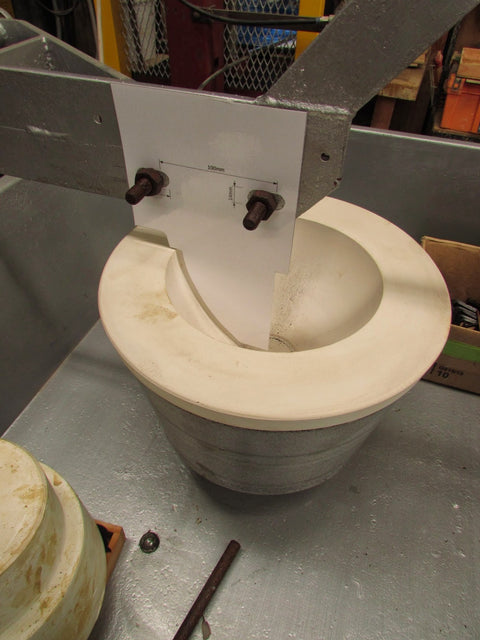
We pride ourselves on the fact that Morris and James is by and large an artisan pottery…but sometimes we do have to weigh up the value of making everything entirely by hand. As a product designer I have often debated with clients (and myself) about the issue of ‘real value’, targeting and putting effort into areas where it really matters. Some things that we agonise over are simply of no consequence to our customers; in fact things that we might regard as technical flaws are actually seen as desirable characteristics, unique qualities that subtly and not so subtly distinguish one piece from another. However, in some cases the selective use of technology can actually add to or introduce qualities to a product that would otherwise be hard or too expensive to reproduce.
Thirty years ago when Anthony Morris started the business he introduced the idea of intermediate technology and over the years sought ways to eliminate some of the physically demanding aspects of production allowing the potters to concentrate on the more subtle aspects of their craft. The introduction of the overhead extruder was by far the most significant step in this process and has fundamentally influenced the way in which we go about making our pottery. Working from preformed cylinders substantially reduces the physical demands on the potters, allowing them to make very large pots without the risk of long term injury. It is not now necessary to have the physique and strength of an All Black to craft Morris & James pots!



Recently we have revisited an on ‘old’ technology, a process that has been around since the early 1800’s. In short, clay is forced into a mould that sits on top of (the equivalent of) a potter’s wheel. We became interested in this process when we decided that we would like to introduce a stacking series of table bowls. For this to work effectively the bowls needed to be a regular size and shape. We found and restored a machine, designed and had made some aluminium forms and can now produce bowls that ‘nest’ consistently. Although the first step, producing a ‘blank’ bowl is done using a tool, the inner surface is finished by hand, introducing the familiar concentric pattern typical of hand thrown items. The contrast between the beautifully smooth exterior and the rippled inner is a pleasing, and successful balance between hand and machine made values.

- Nick C

